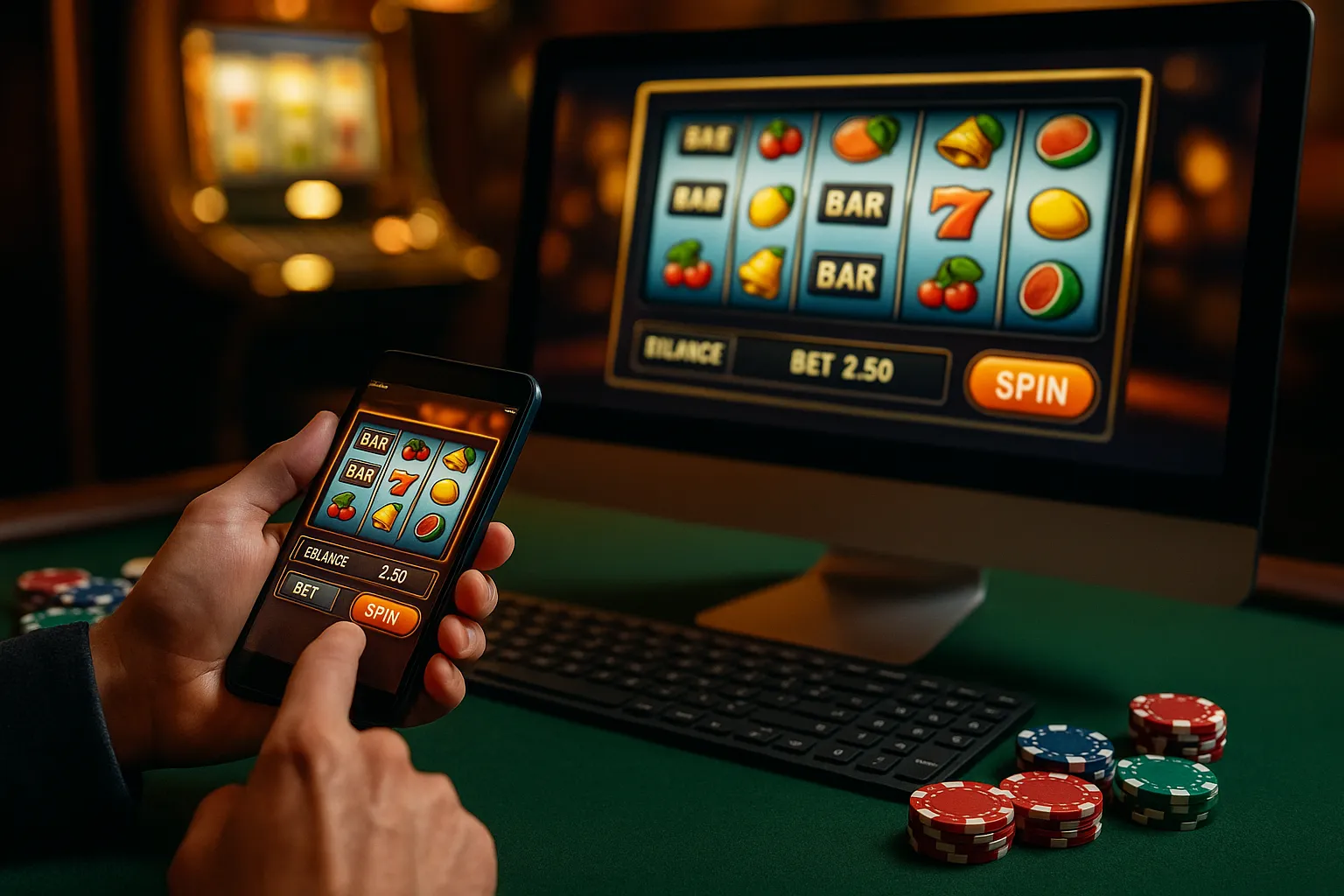Over the past decade, I’ve toggled between my computer at home and my smartphone on the go to spin reels and chase jackpots. From a technical standpoint, mobile and desktop slot games run on the same Random Number Generators (RNGs) and payout tables. Yet the experience can feel worlds apart—from screen layout and controls to performance under varying network conditions. Drawing on my own sessions across devices, conversations with developers, and observations of evolving player habits, I’ll demystify the key distinctions between mobile slots and their desktop counterparts, so you know what to expect no matter where you play.
Design and Interface Adaptations
Developers tailor interfaces to suit screen size and input method. On desktop, you’ll often find expansive layouts with visible paytables, multiple control buttons, and space for dynamic animations around the reels. Mobile versions streamline these elements, consolidating menus into collapsible icons and enlarging spin buttons for easy thumb taps. As a mobile player, I once switched between devices mid-session and appreciated how the phone version prioritized core functions, hiding less-used features behind intuitive swipes or taps.
When comparing offerings on slot sites uk, you’ll notice that some operators provide distinct feedback animations or haptic vibrations exclusively on mobile, amplifying immersion. They also optimize icon sizes and color contrasts to maintain clarity under varying light conditions—think outdoor use under bright sunlight—without compromising on visual appeal.
Performance and Technical Considerations
A crucial difference lies in performance constraints and network dependencies. Desktop play typically benefits from stable broadband connections and the processing power of modern computers. This allows for richer graphics, seamless multi-angle live dealer streams, and faster load times. In contrast, mobile slots must contend with variable cellular or Wi-Fi signals and limited CPU and memory. Developers often adjust graphic fidelity, frame rates, and animation complexity to ensure acceptable performance on a wide range of devices.
I recall one evening traveling by train when my mobile slot game cut corners by simplifying background animations during peak network usage. The desktop version, running at home, rendered full 3D graphics without a hitch. While the change didn’t alter the game’s fairness or RTP, it did affect my perception of polish and fluidity.
Game Features and Bonuses
While the underlying game logic remains identical, bonus features and promotions can vary across platforms. Desktop players frequently get access to pop-up tournaments, leaderboard competitions, or exclusive high-stakes VIP tables. Mobile users, on the other hand, might enjoy time-bound push notifications for free spin giveaways or geo-based rewards triggered when opening the app in certain locations.
During a recent trial on a multi-platform site, I found that my desktop account unlocked a week-long leaderboard challenge tied to live dealer blackjack, while the mobile app rewarded frequent logins with small deposit bonuses valid only on mobile slots. Both campaigns aimed to maximize retention, but their mechanics reflected the device’s strengths: immersive visuals on desktop, and real-time engagement hooks on mobile.
Graphics, Animations, and User Experience
Graphics and animation styles also adapt to platform capabilities. On desktop’s large displays, intricate particle effects, depth-of-field animations, and multi-layered parallax backgrounds are common. Mobile developers often simplify these to single-layer animations, flat UI elements, or optimized sprite sheets that load faster and reduce battery drain. This balancing act ensures that gameplay feels responsive and visually engaging across low-end handsets and flagship devices alike.
My personal benchmark test contrasted a desktop slot with full-screen high-definition video backgrounds against its mobile counterpart. While the desktop version’s visuals felt cinematic, the mobile output retained crisp symbols and clear payline indicators—albeit with fewer background effects. The key takeaway: developers prioritize essential gameplay graphics on mobile, ensuring functionality even on older devices.
Controls and Accessibility
Control schemes vary significantly between desktop and mobile. On desktop, you navigate settings, adjust bet sizes, and view game info with mouse clicks, keyboard shortcuts, and hover-activated tooltips. This affords quick access to detailed information without interrupting the flow. Mobile slots replace hovers with long-press gestures or dedicated info icons; some even integrate voice prompts or gesture-based betting (swiping up/down to adjust stakes, for example).
Accessibility features also differ. Mobile platforms offer built-in screen readers, magnification gestures, and haptic feedback, which can be leveraged to assist visually impaired or mobility-challenged players. Desktop interfaces might rely more on customizable UI scaling, high-contrast modes, or third-party assistive software. If accessibility is crucial for you, testing both versions can reveal which delivers the smoother experience.
Security and Fairness Consistency
Security protocols maintain parity across devices. Licensed casinos employ SSL encryption, secure token-based authentication, and rigorous audit trails for both mobile apps and desktop websites. I’ve tested platforms where the mobile app required biometric login—fingerprint or face recognition—offering added convenience without compromising security. On desktop, you might use hardware security keys or authenticator apps for two-factor authentication. Both methods reinforce trust and safeguard account integrity.
RNG certification applies equally: reputable providers ensure that the same randomization logic governs spins on any device. In my tests, I ran identical bet patterns on desktop and mobile to compare spin distributions; the results remained statistically indistinguishable, reaffirming fairness.
Practical Tips for Cross-Platform Players
For players who switch between desktop and mobile, here are some best practices:
• Sync your account properly to avoid bonus conflicts. Differences in active promotions can sometimes lead to confusion when wagers no longer count toward certain bonus requirements. Ensure you select the correct device-exclusive bonus each time.
• Check data usage if playing on cellular networks. High-definition animations and live feeds can consume significant data; switching to a lower-quality setting can help control your bill.
• Update both app and browser versions regularly. Developers frequently roll out optimizations and security patches tailored to each platform.
• Test device-specific features like haptic feedback or voice prompts. These can enhance immersion but may require permission grants during initial setup.
Conclusion
At the end of the day, mobile and desktop slots share the same core mechanics, RTPs, and fairness guarantees. The differences you experience lie primarily in interface design, performance optimization, bonus structures, and device-specific features. Whether you’re spinning reels on a 27-inch monitor or a 6-inch smartphone screen, the heart of the game remains unchanged. By understanding how each platform tailors the experience, you can select the one that best fits your lifestyle, device capabilities, and accessibility needs—ensuring both convenience and enjoyment no matter where you play.




